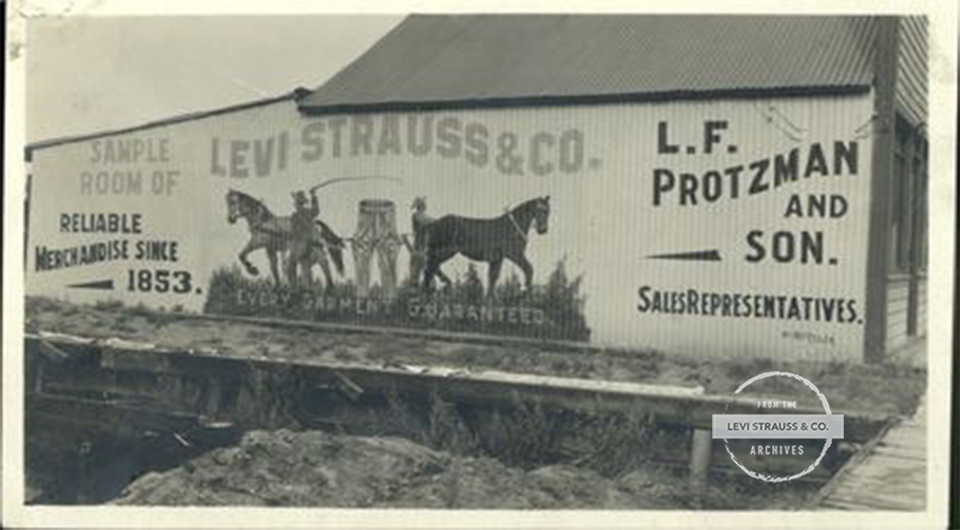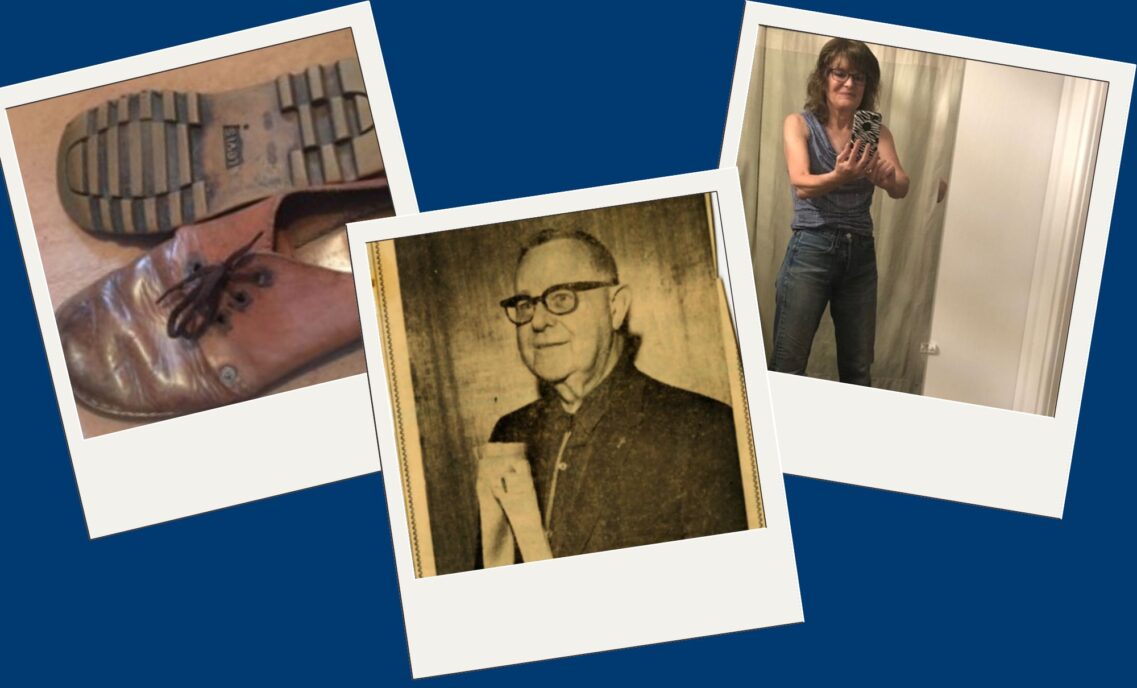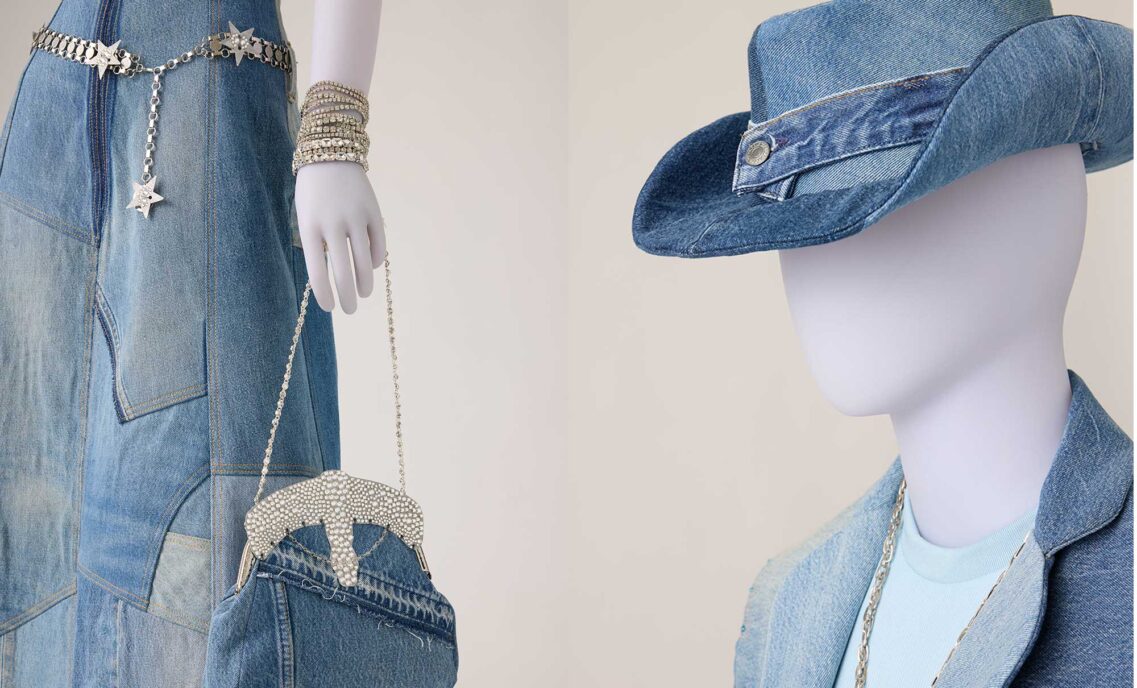From ghost towns and ranches to hidden attic trunks, as the Historian for Levi Strauss & Co., I have tracked unusual discoveries in a variety of places. Uncovering a massive mural connected to the company in a cantina was unexpected, but that’s just what happened during a recent renovation of a Mexican restaurant in Arizona—once layers of plaster were removed, an antique advertisement was revealed underneath.
“We’ve discovered this gem!” restaurant owner Gary Denny posted on Facebook along with a photo of a painted brick wall, inviting people to correctly guess what the painting said. Portions of the sign (and original wall) were missing but it didn’t deter someone from sharing the answer three hours later—Levi Strauss & Co. Copper Riveted Overalls.

Advertisement for LS&Co. discovered during a restaurant renovation in Arizona.
The restaurant mural, once an exterior wall, is an example of one of the innovative ways LS&Co. got the word out about their products at the turn of the 20th century. At that time, LS&Co. began to paint the sides of buildings with the company name and advertising slogans, all over the West.
Last year, I stumbled across a similar “ghost sign”—the name for these lingering building advertisements from the past—while visiting Dayton, Nevada. The original Dayton building housed a general merchandiser where LS&Co.’s famous copper riveted overalls (today’s blue jeans) were sold. Dayton was a thriving town when Comstock silver was discovered nearby in the late 1800s and was the location of Marilyn Monroe’s final movie in 1961.
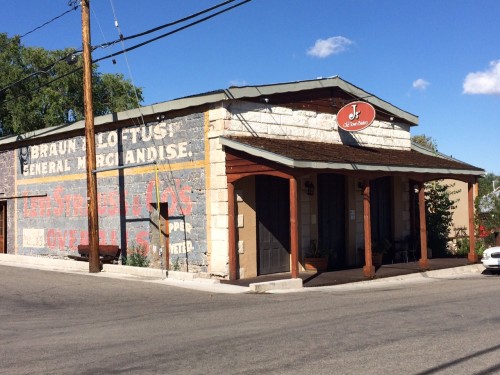
LS&Co. building advertisement in Dayton, Nevada.
Photographs in the LS&Co. Archives depict other painted building signs from the same period. One remarkable image features a sign painted from a merchant in faraway Alaska, another location where the company sold its products. LS&Co.’s famous two-horse trademark reminded customers of the strength of the riveted pants that could not be torn apart.
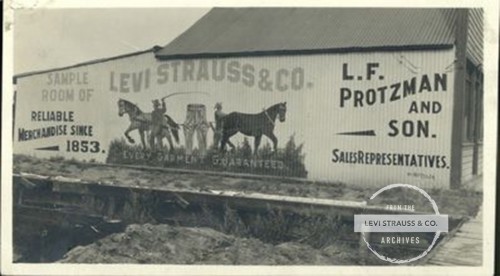
The company eventually adopted other means to advertise. When silent movies came along in the 1910s, for example, LS&Co. created slides about local stores and popular products, which were shown in between movie reels. By the 1930s, the company used billboards and in-store counter displays. This advertising was popular throughout the 1940s and into the 1950s. Things changed dramatically by the 1960s when the company aired its first radio advertisements bringing Levi’s® blue jeans into the modern marketing age.

Walking down Battery Street from today’s Levi’s Plaza, you can still see LS&Co.’s 1906 headquarters. A glance up at the building at the east side of Pine and Battery Streets will reveal a single faded word on an outside wall—LEVIS. Set amid the towering skyscrapers, the sign is ghostly evidence of LS&Co.’s early roots that continue to leave an imprint on today’s modern world.
ABOUT THE AUTHOR
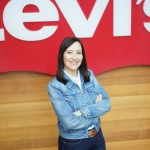 Tracey Panek is the Historian for Levi Strauss & Co. where she manages the day-to-day workings of the Levi Strauss & Co. Archives as a key corporate asset, answering historical questions, assisting designers, brand managers, executives and other employees whose work requires historical materials in the Archives.
Tracey Panek is the Historian for Levi Strauss & Co. where she manages the day-to-day workings of the Levi Strauss & Co. Archives as a key corporate asset, answering historical questions, assisting designers, brand managers, executives and other employees whose work requires historical materials in the Archives.
Prior to joining LS&Co., Tracey spent 14 years as Historian and Archivist at AAA Northern California, Nevada & Utah where she managed a corporate history program for the 100+ year old company. She began her corporate history career at AirTouch Communications—today Verizon and Vodafone—a San Francisco based company that launched cellular service at the Los Angeles Olympics in 1984.
Like this story?
Sign up for the Unzipped newsletter to get the best of the Unzipped blog — company news and views, employee profiles, innovation and sustainability stories, behind-the-scenes and Archives highlights — sent straight to your inbox weekly.



